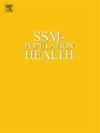估计2017-2023年美国服务业州带薪病假法对工人工作成果的影响
IF 3.1
2区 医学
Q1 PUBLIC, ENVIRONMENTAL & OCCUPATIONAL HEALTH
引用次数: 0
摘要
在缺乏联邦带薪病假(PSL)标准的情况下,美国许多州已经通过法律,为工人提供这种福利。这些法律可能对低薪工人特别有利,因为他们的雇主通常不自愿提供公共福利。我们利用了来自The Shift Project (N = 68,930)的新数据,该项目在2017年至2023年期间对美国服务业工人进行了调查,以检查州PSL法律对工人的直接结果(即PSL覆盖范围和出勤率)、下游工人结果(如健康、福祉和劳动力市场结果)以及公司调整渠道(如小时工资、工作时间表和其他附加福利)的影响。我们使用堆叠差异模型来估计11个州的PSL法律对服务业工人的影响,利用我们的数据的时间范围和范围来比较这些法律实施前后的待遇和控制状态。我们发现,州PSL法律使小时工获得PSL的机会增加了14个百分点(p <;0.001),并将带病工作的工人比例降低了3个百分点(p <;0.01)。此外,我们发现几乎没有证据表明企业通过减少工人的其他福利来抵消提供PSL的成本。服务部门工人的公共卫生服务覆盖范围的扩大,以及他们带病工作的可能性的降低,可能对公共卫生产生重大的积极影响。但是,我们也表明,PSL法律对其他下游健康、福祉和劳动力市场结果的影响很小。本文章由计算机程序翻译,如有差异,请以英文原文为准。
Estimating the impact of state paid sick leave laws on worker outcomes in the U.S. service sector, 2017–2023
In the absence of a federal paid sick leave (PSL) standard, numerous U.S. states have passed laws to provide workers access to such benefits. These laws may be especially beneficial for low-wage workers whose employers often do not voluntarily provide PSL. We draw on novel data from The Shift Project (N = 68,930), which surveyed U.S. service sector workers between 2017 and 2023, to examine the effects of state PSL laws on proximate worker outcomes (i.e., PSL coverage and presenteeism), downstream worker outcomes (e.g., health, well-being, and labor market outcomes), and firms' channels of adjustment (e.g., hourly wages, work schedules, other fringe benefits). We use stacked difference-in-differences models to estimate the effects of 11 state PSL laws on service sector workers, leveraging the time horizon and scope of our data to make comparisons between treatment and control states before and after the implementation of such laws. We find that state PSL laws increased hourly service sector workers’ access to PSL by 14 percentage points (p < 0.001) and reduced the share of workers who worked while sick by 3 percentage points (p < 0.01). In addition, we find little evidence that firms offset the costs of providing PSL by reducing other benefits for workers. This increase in PSL coverage among service sector workers and their reduced likelihood of working while sick could have significant positive implications for public health. But, we also show that PSL laws have little demonstrable effect on other downstream health, well-being, and labor market outcomes for covered workers.
求助全文
通过发布文献求助,成功后即可免费获取论文全文。
去求助
来源期刊

Ssm-Population Health
PUBLIC, ENVIRONMENTAL & OCCUPATIONAL HEALTH-
CiteScore
6.50
自引率
2.10%
发文量
298
审稿时长
101 days
期刊介绍:
SSM - Population Health. The new online only, open access, peer reviewed journal in all areas relating Social Science research to population health. SSM - Population Health shares the same Editors-in Chief and general approach to manuscripts as its sister journal, Social Science & Medicine. The journal takes a broad approach to the field especially welcoming interdisciplinary papers from across the Social Sciences and allied areas. SSM - Population Health offers an alternative outlet for work which might not be considered, or is classed as ''out of scope'' elsewhere, and prioritizes fast peer review and publication to the benefit of authors and readers. The journal welcomes all types of paper from traditional primary research articles, replication studies, short communications, methodological studies, instrument validation, opinion pieces, literature reviews, etc. SSM - Population Health also offers the opportunity to publish special issues or sections to reflect current interest and research in topical or developing areas. The journal fully supports authors wanting to present their research in an innovative fashion though the use of multimedia formats.
 求助内容:
求助内容: 应助结果提醒方式:
应助结果提醒方式:


